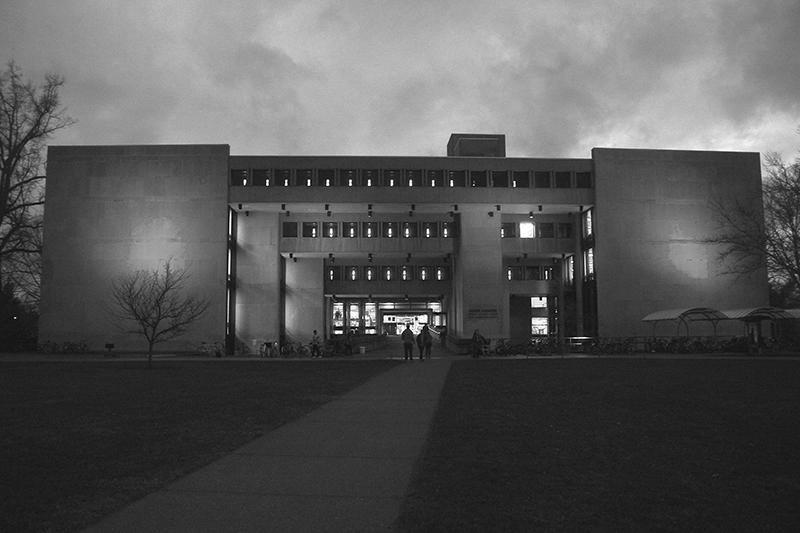When I want to focus or study, I always crave a quiet space and a lot of natural sunlight. Naturally, libraries are my main hub for when I need to get in the zone and do a lot of work, but I find that the only library that always meets my needs for a study space is the Science Library. Why? It has a strict rule of no food and silence, which is exactly what I need when I write an essay last-minute. On the other hand, working at places like Azariah’s Café is the perfect place for me to hang out with friends or read for fun.
I remember when I first came to Oberlin how strange it was to see libraries allow food into a space filled with invaluable books. It might be because I am an English major and work with the Oberlin College Libraries Digital Collaborative, but food near books just feels… wrong. I think having a cafe in a library is weird, but it kind of works for the best, as the first floor does not have as many books. But what about food on the other floors of Mudd Center?
At first, I was thinking it might be smart for places like Mudd to only allow food on the A-level and first floor, but that sounds extremely pretentious to not allow them on all the other floors. I really do find it hard to really crack down on my work in Mudd at times because I hear the identifiable crackling of chips that makes me want to instantly shift away from that person (sorry not sorry). Some days are harder than others when it comes to having focus, especially during exams, so hearing others eat and talk really does disrupt my study focus during stressful times.
If places like the Clarence Ward Art Library or Mudd suddenly started putting signs up that said “no food near books,” I really am curious what would happen. For example, there would be less waste inside of Mudd Center and more people studying in the upper floors because there would now be a quiet space to do work. Although, then the first floor would become incredibly crowded with possibly more accidents near the computers — which are absolutely more expensive to replace. Now, my idea sounds ridiculous in that light. How do we win?
It’s incredibly important to account for students who are neurodivergent and really need more quiet study spaces in Oberlin besides the dorms. Of course, there are plenty of study rooms and scholar studies in Mudd, as well as the two study rooms in the Science Library, but those rooms really don’t feel the most comfortable. Often these closed rooms are very hot, smell like something I can’t identify, the chairs make me want to stand every 21 minutes, and it’s hard to book a room because most of the time, someone is already in them without reserving or they are all booked. Yes, there are plenty of decent spaces to study in, but more often than not my first choice.
Oberlin has been working on providing more support to students who are registered through the Office for Disability and Access. For any type of exam, the Office now has a separate testing space where students can take their test in complete silence with a good amount of space and blinders — which helps me a lot when I am taking an exam I need to really focus on. This new testing space is located in the same building as Stevenson Dining Hall, and I highly recommend going if you are registered through the ODA.
When thinking about what I want a quiet space to be, I think of somewhere comfortable and free of distractions. I don’t want to cross places like Mudd off my list for when I want to really plug in and get a lot of work done, but I really do find noisy environments incredibly distracting and not good for books if someone is eating or drinking. I think that study spaces like Mudd and the Art Library are spots for socializing as well as studying, hence the open invitation for Obies to sit anywhere and do whatever they want (except for the fourth floor of Mudd).
All of these library spaces are very comfortable with good seating and offer great ways to collaborate with other students, but what I am really looking for is a comfortable space for students who need a quiet environment for studying. Oberlin does not have that… yet. I hope that Oberlin will consider creating a comfortable space with a variety of nice couches, coffee tables, and a section for more closed-off studying where students have their own “comfy” rooms. Maybe even have students who are registered through the ODA have their own room where they can really thrive in a quiet and, most importantly, private environment.




